Keyword research is one of those “buzzworthy” terms in the blogging/creator industries right now, and it refers to the process of investigating search term performance and using that information to form a thorough blog post.
There are a bunch of different keyword researching tools that creators can use to optimize their blog posts, and in this post, we’re going to cover some of our (and our community’s) favorites.
Let’s dive in:

1. Use the right tools to find (and track!) keyword performance.
There are tons of different keyword tools available these days, and they’re available at all different price points.
Popular Free Keyword Research Tools
Did you know you can use a regular ol’ Google search to do some keyword research? It’s true! Check the People Also Ask or Related Searches boxes within a Google search and see how Google suggests you end a search to get ideas.
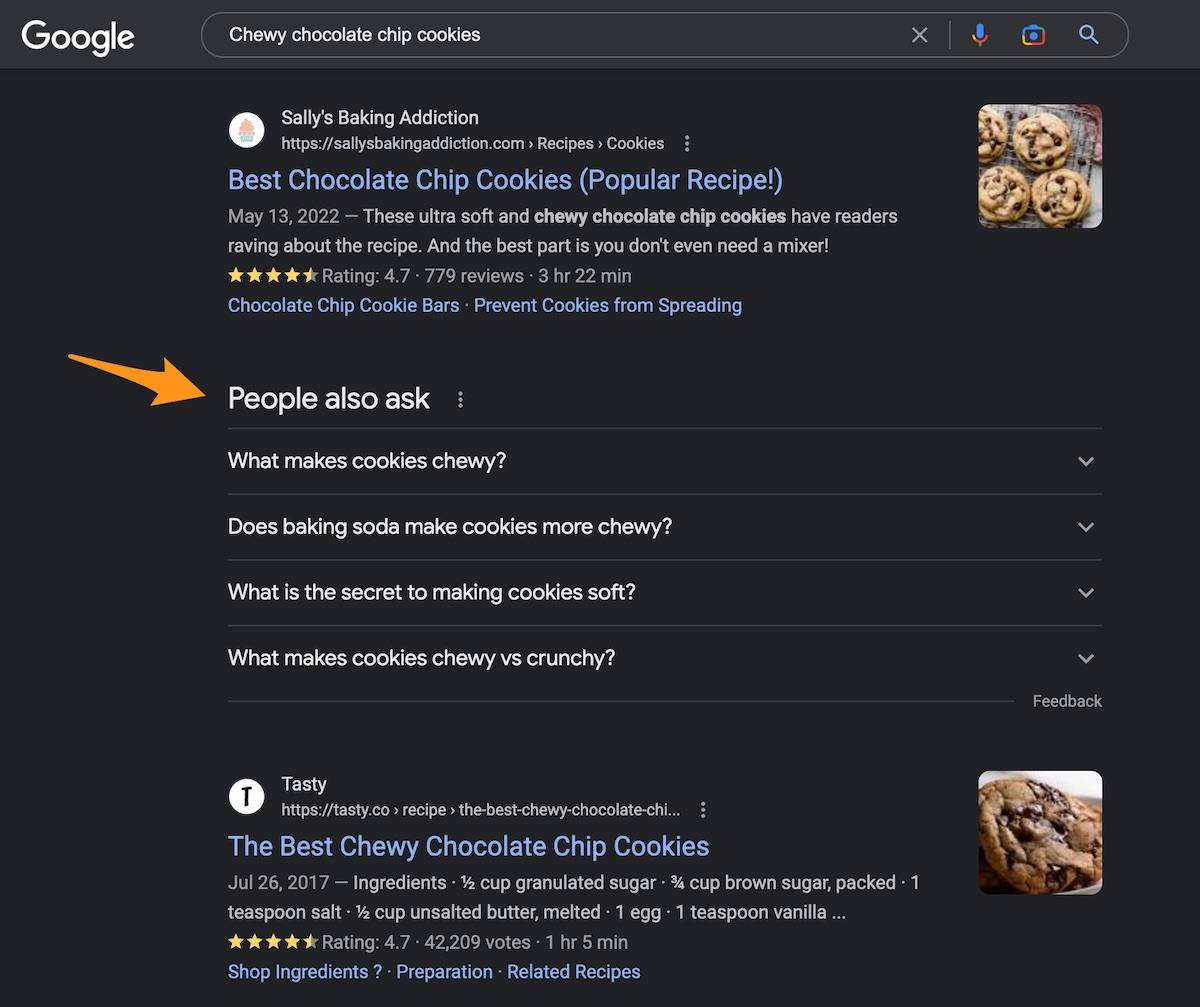
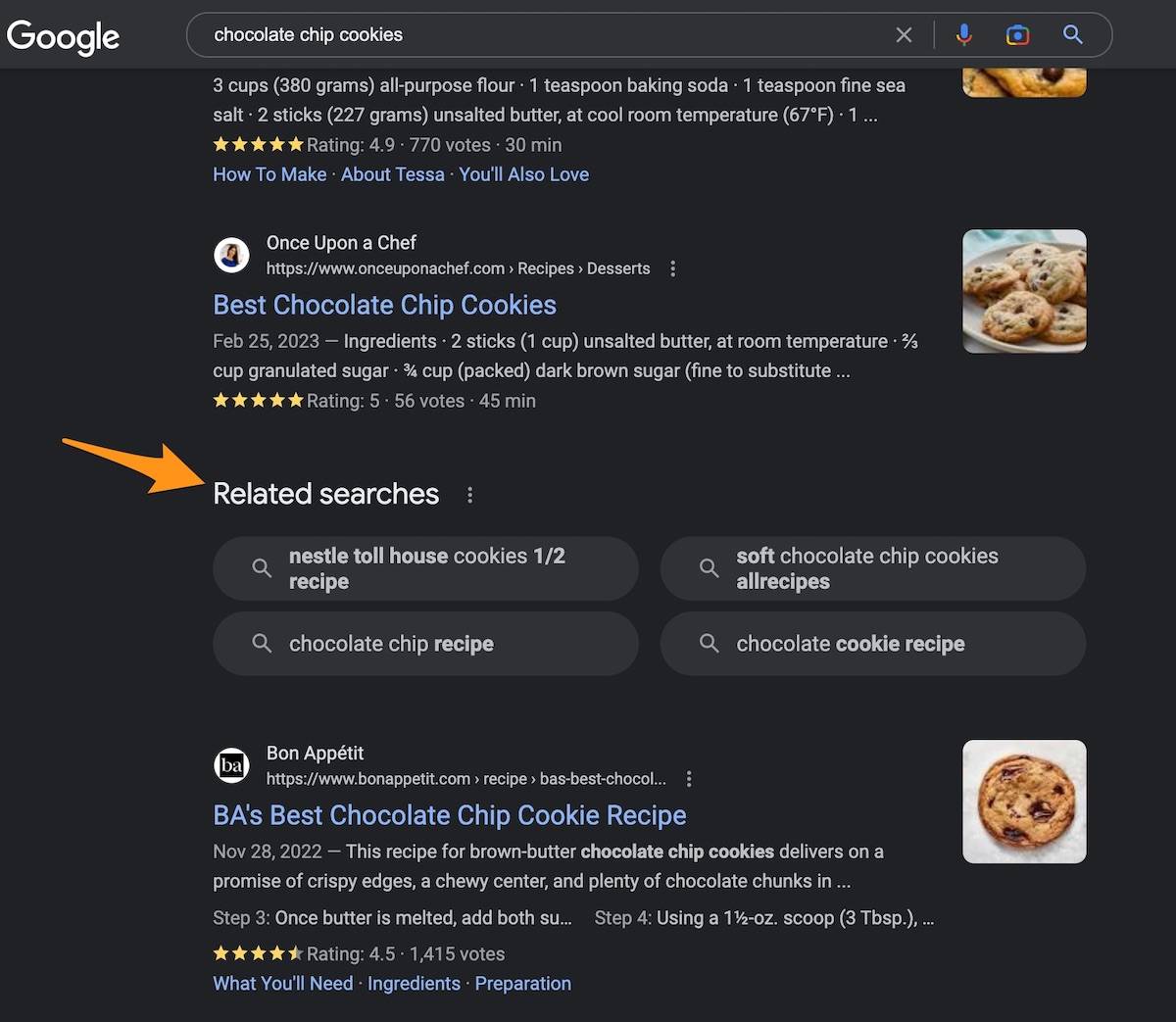
You can also utilize tools like Google Trends or Google’s Keyword Planner (which lives within Google Ads) to see what searches are trending and refine your keywords.
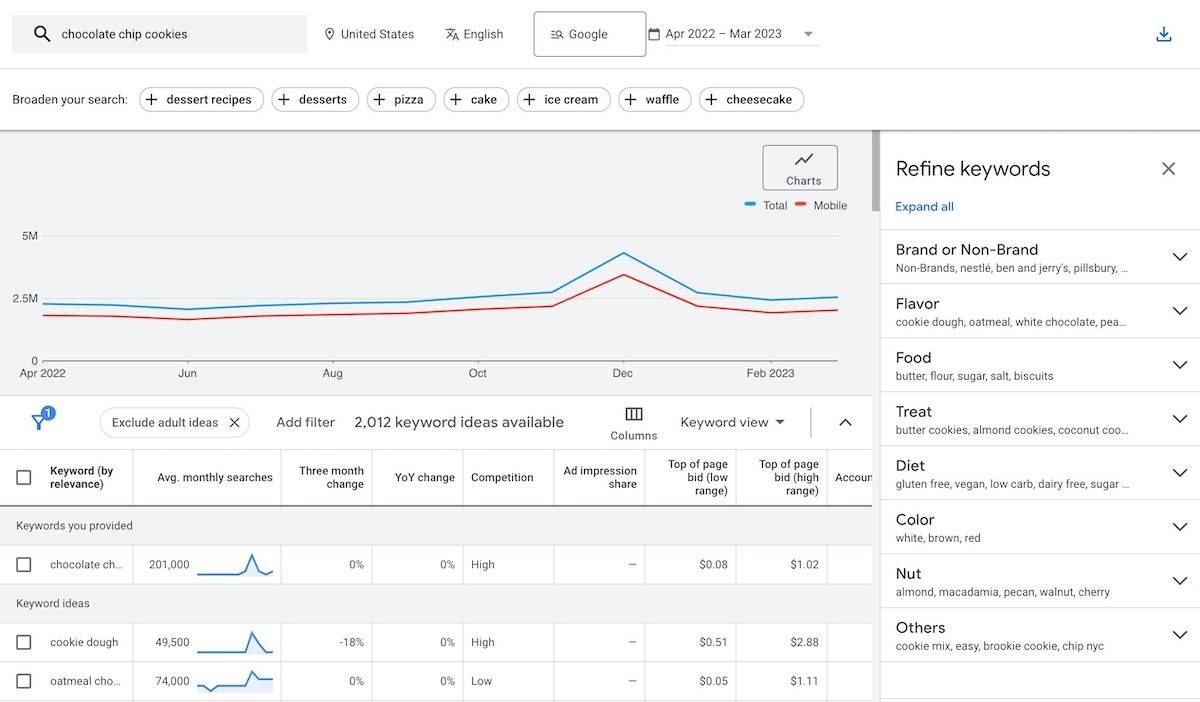
Browser Extensions
There are a few browser extensions that our members, Experts, and team love:
- Keyword Surfer: This extension allows you to see keyword information within a Google search and gives you estimated traffic information for results
- Keywords Everywhere: The free version gives you difficulty metrics, trends charts, related keyword information, and more.
You can even get creative to get an idea of what people are searching for. Places like Pinterest, YouTube, Reddit, and Quora can all be effective places to find keyword inspiration.
Popular Paid (or Freemium) Keyword Research Tools
KeySearch*
Price: starting at $17/month after 1 month trial
KeySearch is one of the most popular keyword research tools because it’s a little more cost-effective than others. In fact, they have a limited free trial plan (hence the asterisk)!
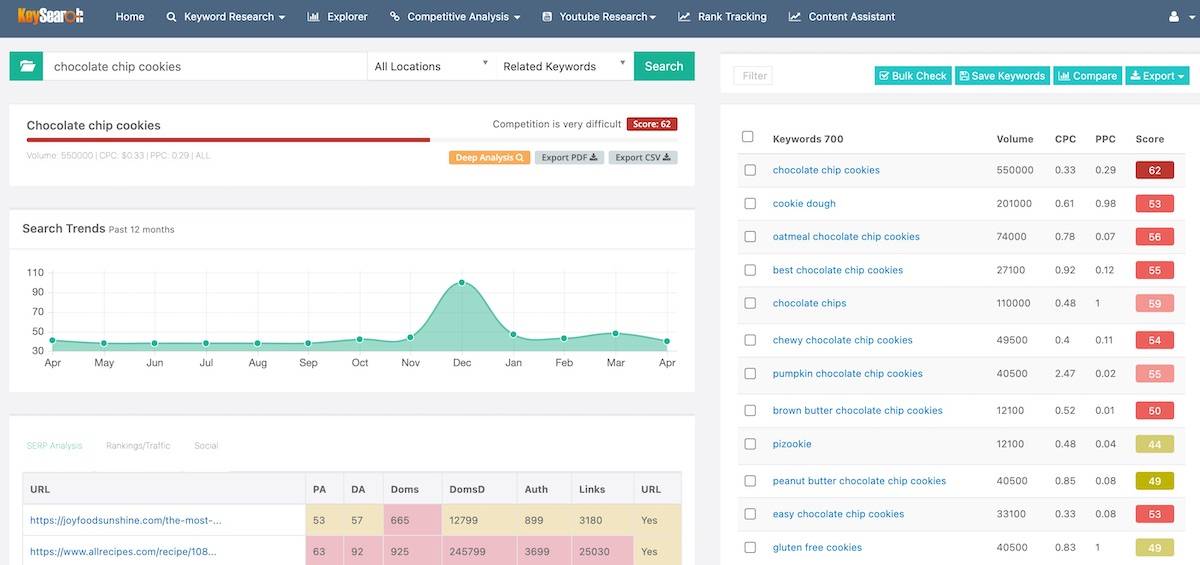
KeySearch uses Google APIs and shows you information like search trends, keyword difficulty, search volume, related keywords, and more.
Ubersuggest*
Price: starting at $29/month
Ubersuggest is another one of those “freemium” keyword research solutions, and you get 3 free searches per day if you create an account.
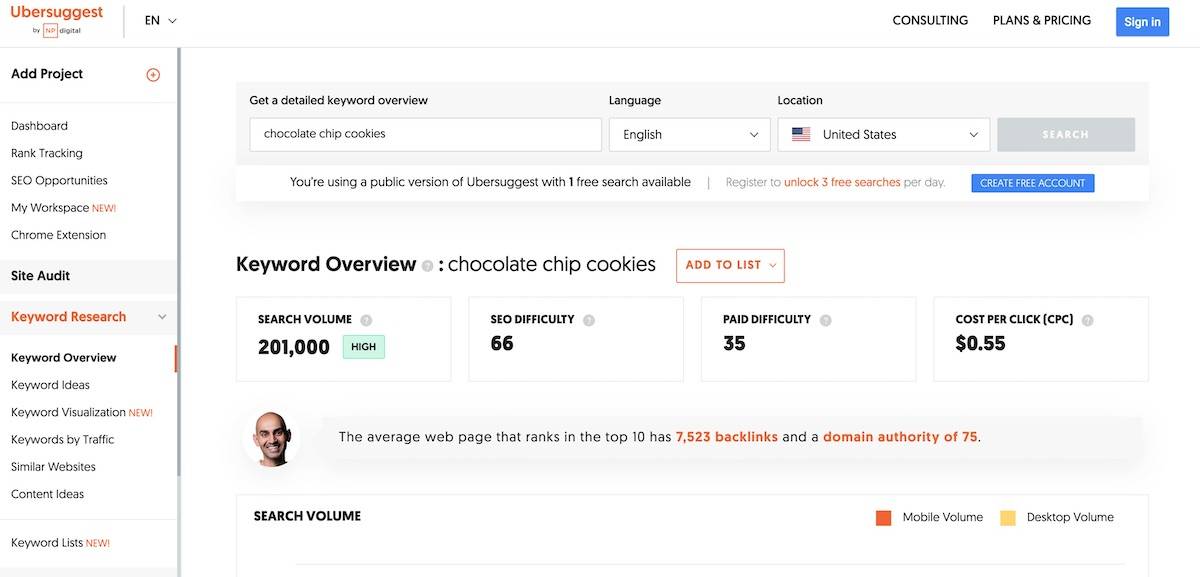
You need to upgrade to get information like historical keyword data, searcher information, and other information, but it could be a good starting point!
AnswerThePublic*
Price: starting at $9/month
Owned by Neil Patel Digital (the same company that makes Ubersuggest), AnswerThePublic gives you information about questions related to your keyword as well as different versions of your keyword in visual graphs.
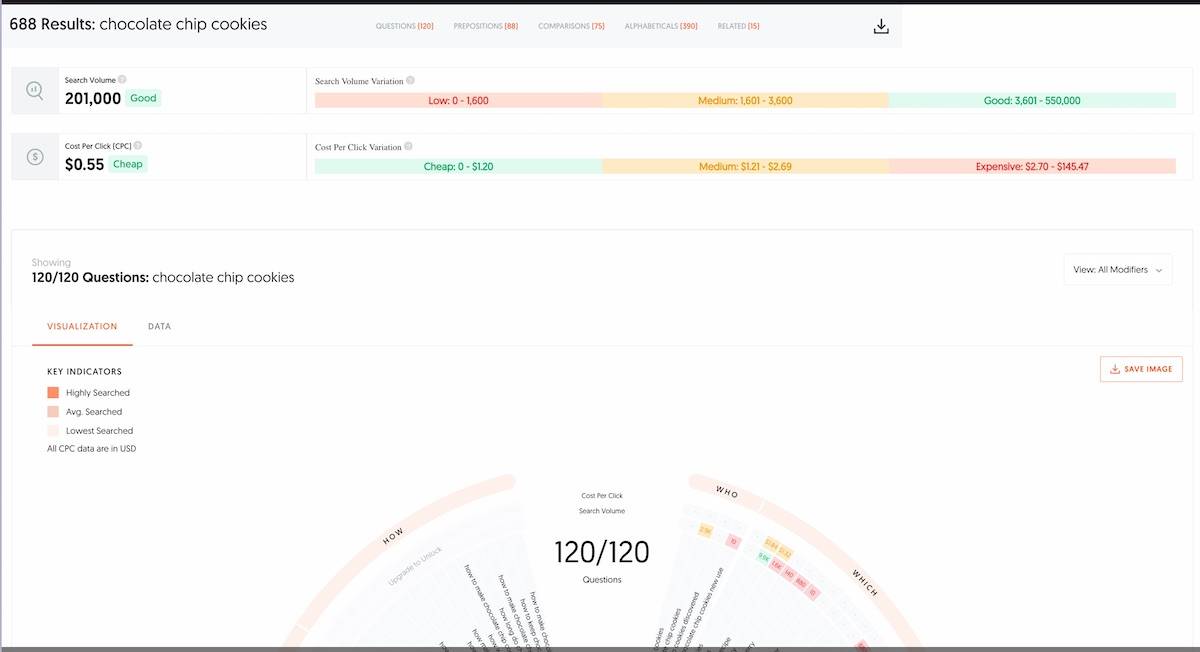
What’s the difference between Ubersuggest and AnswerThePublic? According to the Neil Patel team, “AnswerThePublic helps you get strategically creative. Ubersuggest takes you on a deep dive into endless keyword data opportunities.”
AnswerThePublic has a 7 day free trial and limited free features so you can try it before deciding it’s right for you.
RankIQ
Price: starting at $49/month
RankIQ analyzes the content that ranks in higher positions in search results and identifies the topics and subtopics a blogger may want to include in their blog posts. It also provides you with estimated ranking information like competition, time to rank, and content targets.
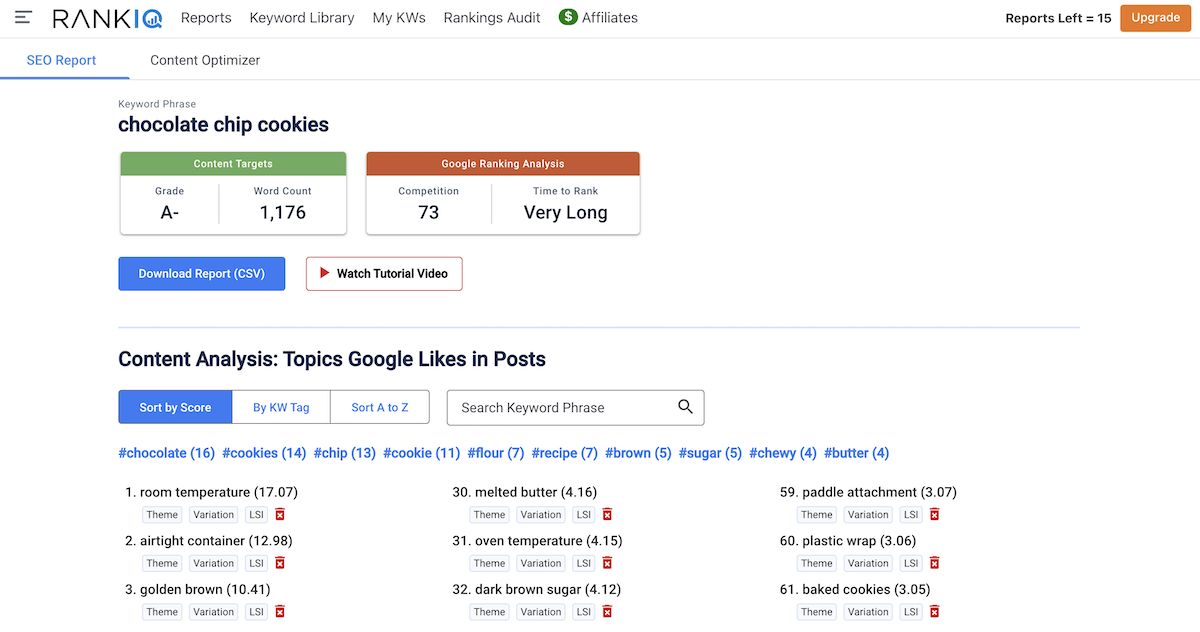
RankIQ also has a Content Optimizer tool where you can get optimization tips on the blog post you’ve already written and a Keyword Library to help you find keywords based on any niche. Depending on your plan, you’ll have a limited amount of reports per month available, but you can buy additional reports as needed.
Ahrefs
Price: starting at $99/month for full access
Ahrefs is the keyword research tool that we use the most here at Food Blogger Pro. In addition to their Keywords Explorer tool that can help you find and analyze keywords, they have other site-maintenance features like site audits, broken link checkers, and linking information.
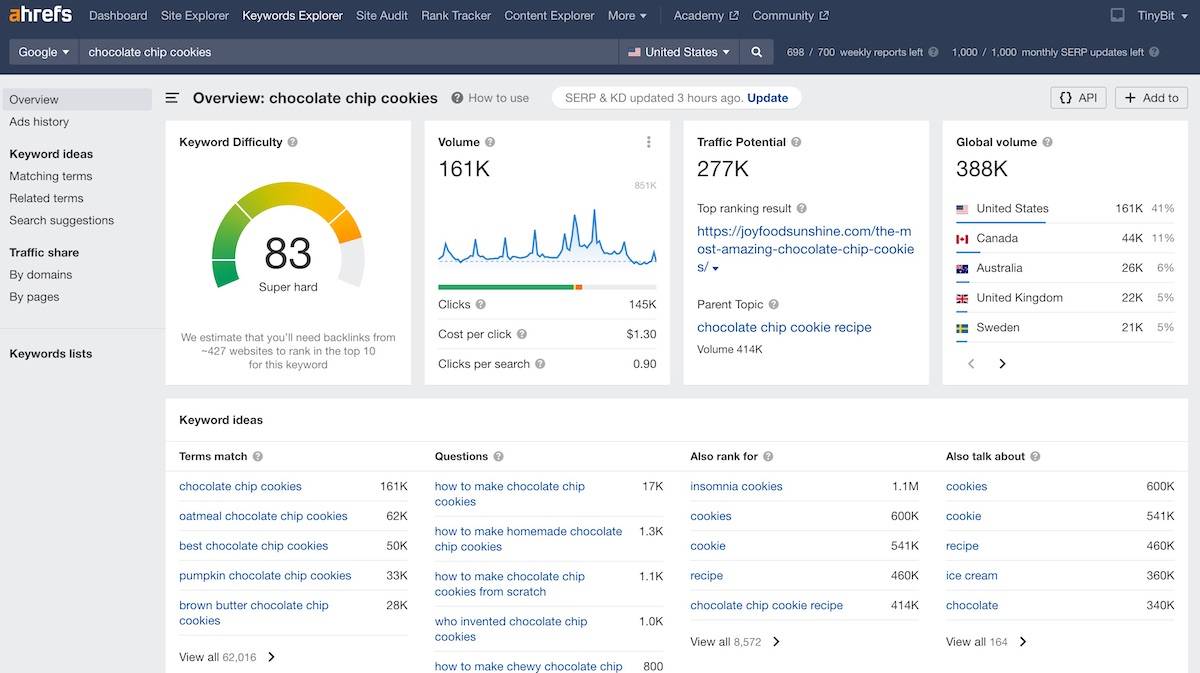
Ahrefs actually does offer a free plan called Ahrefs Webmaster Tools that gives you limited access to some of their features. One of the most helpful features is their Organic Keywords report, which shows you the keywords you’re already ranking for and the position your post is in for that keyword. We recommend signing up for this free plan first before deciding if Ahrefs is right for you!
Semrush
Price: starting at $119.95/month for full access
Similar to Ahrefs, Semrush helps you research, track, and analyze keywords and learn more information about your site. You’ll be able to set up projects to run site audits, check your on-page SEO, learn about your backlinks, and more.
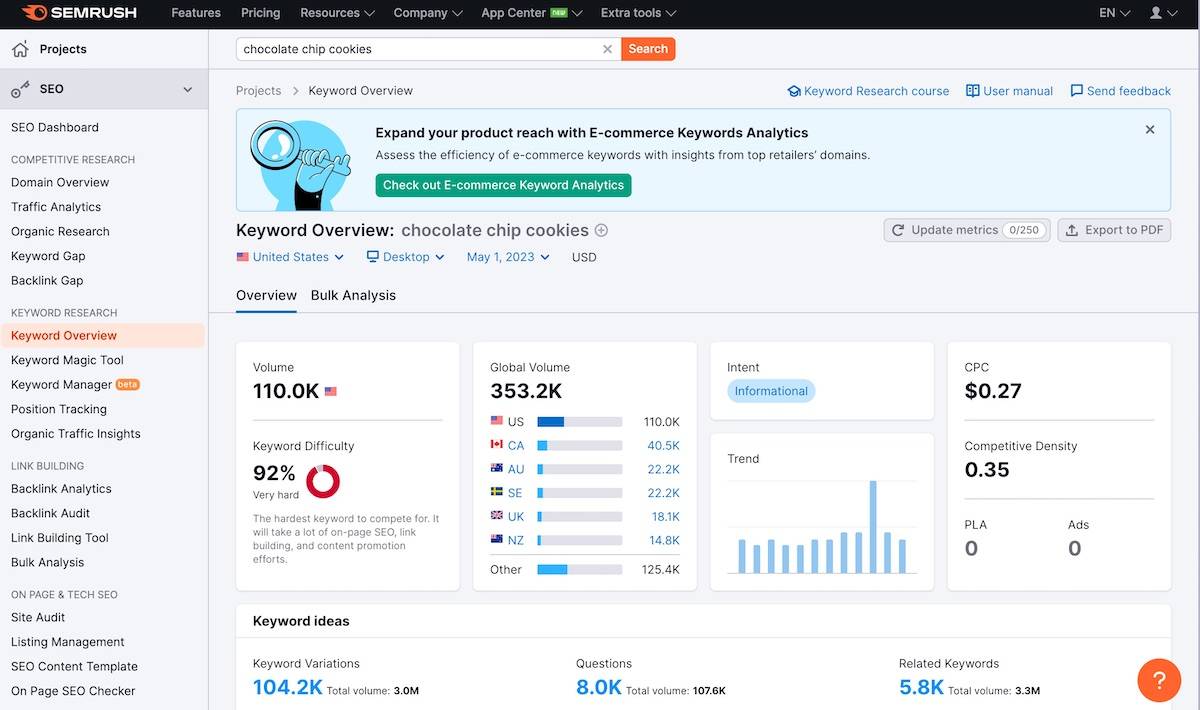
In terms of price and features available, it’s very similar to Ahrefs. That said, Semrush is a robust tool for those who are interested in getting down into the nitty gritty of optimizing their sites!
What about tools for tracking keyword performance?
Once you’ve done all of the keyword research, recipe development, blog post writing, and promotion, how do you actually measure the impact of all of your hard work?
There are plenty of tools out there for this (and most of the tools we covered above allow you to track keyword performance), but some of our faves include:
Google Search Console
This free tool from Google allows you to dig into your search result performance and see your average position for some of the keywords you currently rank for. Click Search Results, and then toggle “Average Position” to on to see that data over time.
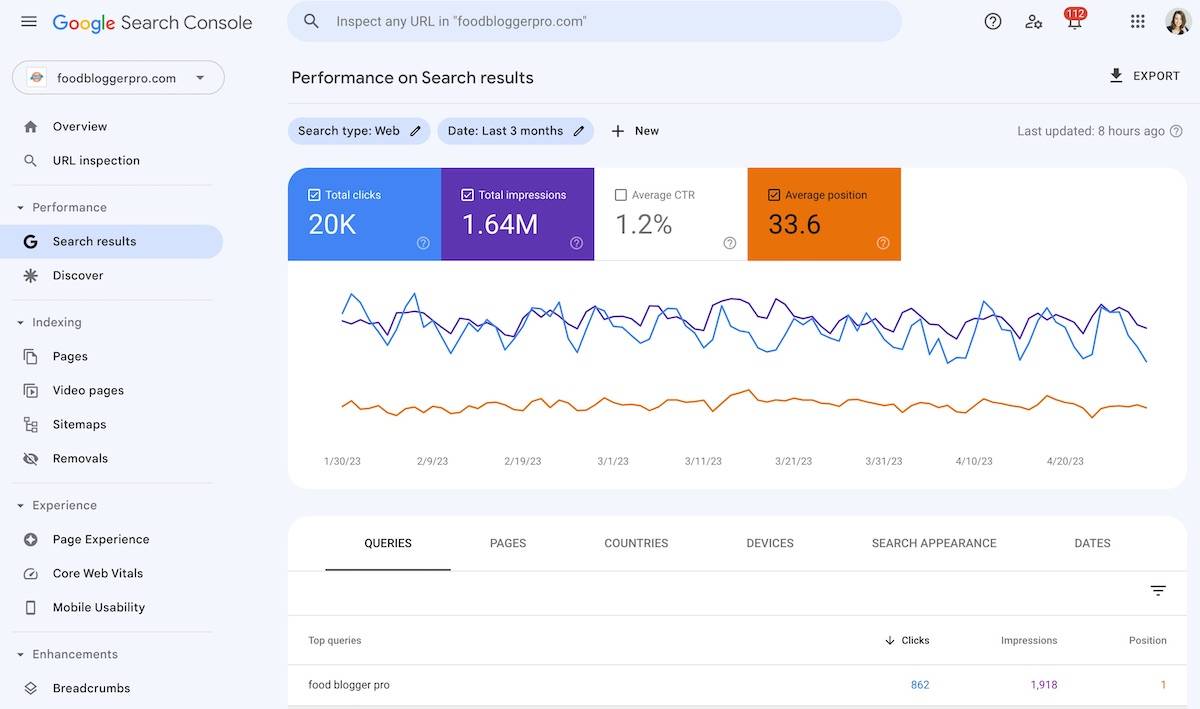
While Google Search Console is a helpful tool, it can be a little tough to find your exact ranking since it calculates average position based on where the top result is sitting. Since search results on desktop and mobile can vary (you can rank third on desktop and eighth on mobile for the same keyword), we recommend using the “position” data point within Google Search Console as guide when analyzing your keyword performance.
Clariti
Clariti is our sister site, and it has some pretty slick keyword rank data and functionality right now. You’ll soon be able to track change in keyword rank position over time!
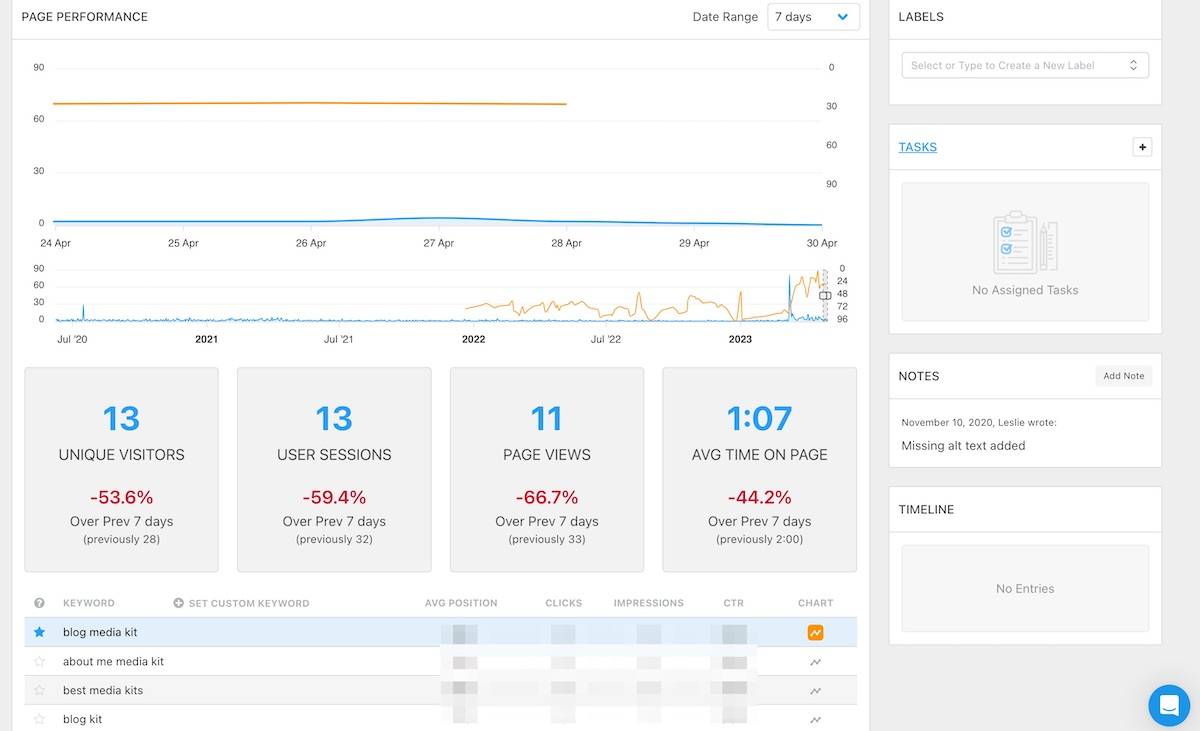
How do you choose the right tool?
This is a great time to use the frustratingly classic response: it depends.
When you’re analyzing keywords and finding potential ranking opportunities, different tools will show you different information in different ways, so it’s up to you to figure out which one (or ones!) can give you the information you need to effectively make decisions.
And you don’t need to use just one keyword research tool. In fact, it’s helpful to use a few to compare data and dig deeper into different keyword opportunities. Not all tools source their ranking information from the same spot, so there will be some discrepancies between what you see in one versus another.
At our sister site, Pinch of Yum, we use:
- Ahrefs for keyword research
- Google Keyword Planner for keyword research
- Topic (a tool available for those running Raptive ads) for keyword research
- Google Trends for keyword research
- Clariti for keyword tracking
- Google Search Console for keyword tracking
How do you actually use these tools?
We’ll get into some keyword research tips and tricks in tomorrow’s part 2 blog post, but at a super high level, here’s how a food blogger may approach keyword research using some of these tools:
Step 1: Search for a keyword idea in a Google search.
- Add words to your search to play around with modifications of your keyword and see what Google tries to auto-complete your search with (for example, type in “vegan chocolate chip cookies” to see other variations on that search term).
- Take a look at the top results for those searches –– are they well-researched and thorough? Or is there an opportunity for you to create a better resource for searchers?
- Take a look at the People Also Ask and Related Searches boxes to get an idea of the types of answers searchers are in need of. You can use this information to come up with recipe ideas, to answer commonly asked questions in your blog post, or as a focus keyword for the blog post.
- If you’re using one of the browser extensions we mentioned, take note of the data it provides for your initial and additional keywords.
Step 2: Use a keyword research tool to discover search volume and keyword difficulty.
- Search for your initial keyword, as well as the variations you found to get a sense of the traffic opportunity.
- Look for keywords with a search volume of at least 100 monthly searches if you’re starting out as a new blogger. As an experienced blogger, you may want to shoot for keywords that have a bit more monthly searches (think over 1000, depending on the keyword).
- Keep in mind that seasonality can affect these numbers, so don’t be afraid to target a keyword with a lower search volume if you can create some really awesome content about it.
- Look for keywords with lower keyword difficulty (this means it may be easier for you to rank!). While each keyword tool calculates their “difficulty” level in different ways, a good rule of thumb is to try and find keywords with a difficulty under 30.
Step 3: Choose your focus keyword and create your content!
- Keep any secondary keywords you may want to try and rank for in mind, as you may be able to incorporate those secondary keywords into your content (for example, if a secondary keyword to your primary “chocolate chip cookies” keyword is “gluten free chocolate chip cookies,” you can have a section in your post about making them gluten free if you’ve tested it).
- Your #1 focus should always be to create the best content you can for your readers, so don’t fall for the trap of keyword stuffing (aka using your keywords too often within your blog post).
In our Part 2 of this two-part blog series, we’ll dive into some of our very best tips to help you keyword research like a pro and make some awesome optimized content.
Watch this space. 😊 We’ll see ya for Part 2 tomorrow!
And remember: If you want even more keyword research info, join the Food Blogger Pro community! Members have exclusive discounts on keyword researching tools (like KeySearch) and resources (like the Cooking with Keywords course), as well as access to our new Keyword Research Expert, Aleka!
Thank you for sharing this valuable knowledge, I use Google Search Console a lot and it’s perfect. I will test other tools as well. Do these paid tools have a free trial?
Hi Anna! Alexa specified at the top of each tool’s section whether or not there is a free trial available. Hope that helps!
Part 2: 6 Keyword Research Tips for Food Bloggers
https://www.foodbloggerpro.com/blog/keyword-research-tips-food-bloggers/